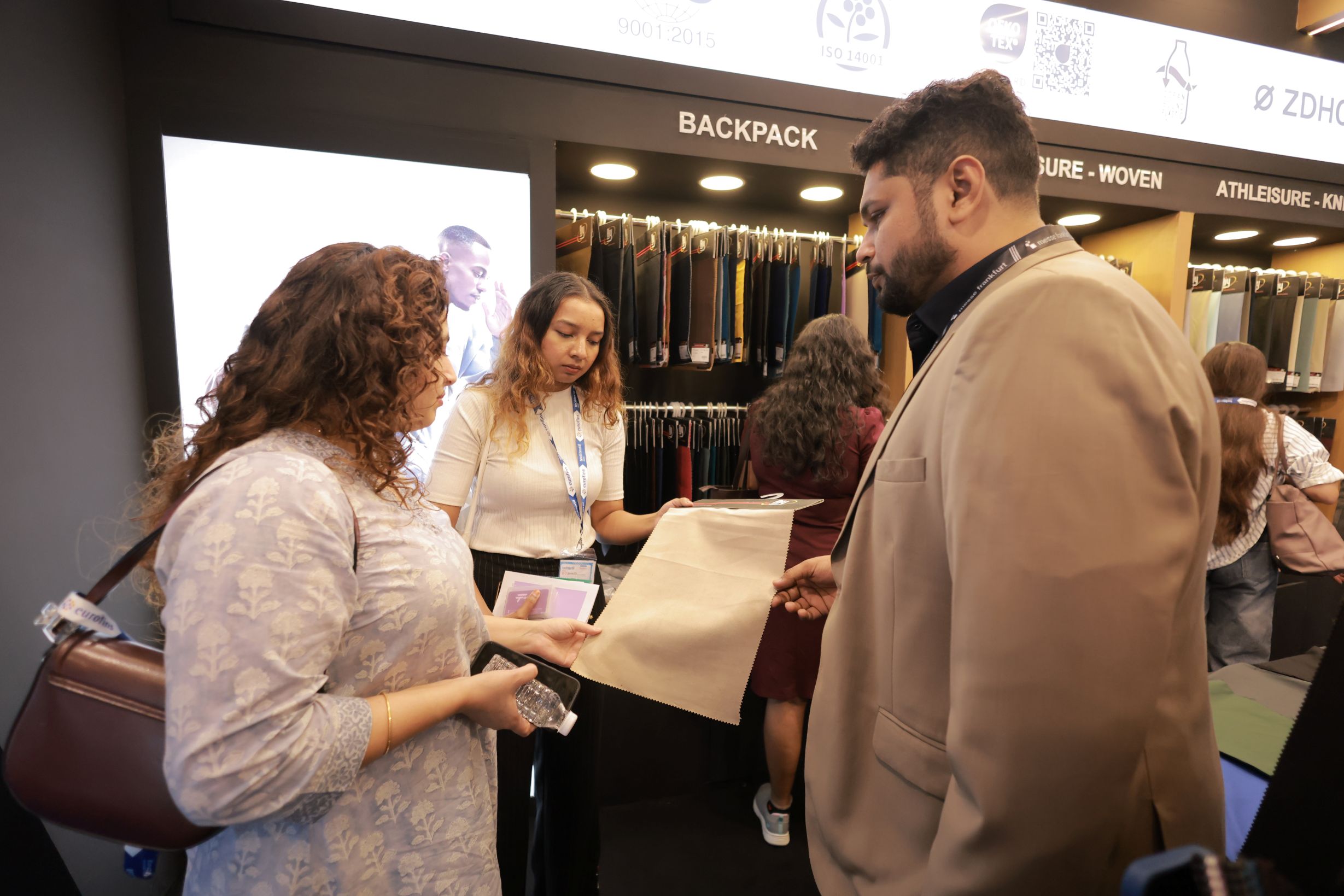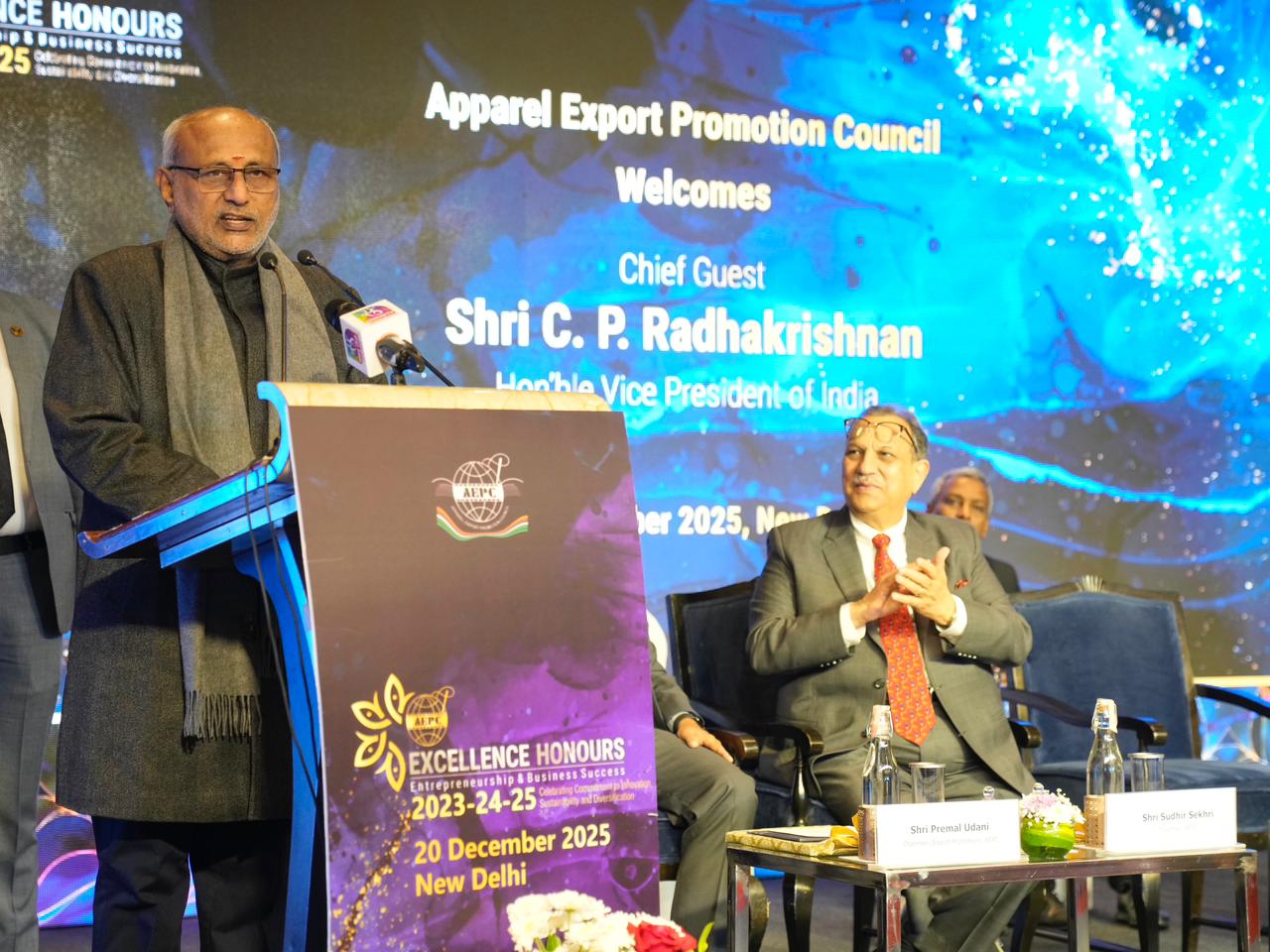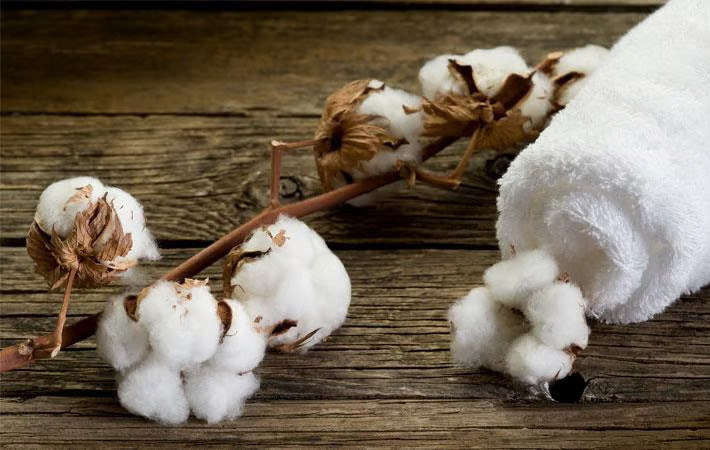FW
US apparel prices jumped for the second month in February, the biggest back-to-back advance in nearly three decades, led by women’s wear. All women’s apparel categories advanced, with footwear prices jumping the most since September 2000, and outerwear, dresses and suits also recording gains. Men paid their part, too, with sweaters and shirt prices increasing at a pace not seen in more than two years.
Clothing was among other consumer categories in February which recorded price gains. Data indicates inflation is firming without breaking out in a way that rattled financial markets last month. Apparel price increase could also be a sign that retailers are doing a better job managing their inventory levels -- a focus of many chains after the holiday season including shoe retailer DSW and Macy’s. With less products on shelves and in warehouses, companies hope to sell a larger portion of the goods at full price, minimizing the need for discounts.
The US apparel market is the largest in the world. It is always changing, attempting to adapt to customer trends and new technology that will allow consumers’ shopping experience to be more enjoyable and ergonomic. Athleisure, which is heavily driven by millennials but appeals to all age groups, continues to be a top growing apparel segment.
Trident has received the Sustainable Textile Production (STeP) certification for its home textile plants in Punjab and Madhya Pradesh. The certification covers the weaving, dyeing and making up processes for Trident’s terry toweling and bed linen manufacturing facilities. The label offers consumers transparency as well. Each label carries a unique product ID and optional QR code consumers can use to trace the production of the product, while learning about textile sustainability and safety.
This certification gives Trident the ‘Made in Green’ by Oeko-Tex label, which is issued for textile products that have been tested against harmful substances and certified according to Standard 100 by Oeko-Tex. The certification also validates that the products originate from sustainable, socially responsible production facilities following the requirements of the STeP certification.
Trident’s home textile facilities have undergone extensive assessment and subsequent complete audit in line with certification mandates on pillars including environmental performance and management, chemical management, quality management, health and safety and social responsibility. Trident prides itself on playing an integral part in protecting and preserving the environment. Incorporated in 1990, and based in Ludhiana, the company has evolved from being a solitary yarn and paper manufacturer to one of the largest, state-of-the-art and integrated home textile manufacturers globally.
With over 160 years of experience in improving production processes at different stages of the textile value chain, Saurer has evolved from being a machinery and component supplier to a leading provider of intelligent solutions and services for processing fibers and yarns.
To better accommodate the growing market in India and neighbours, Saurer has set up a state-of-the-art manufacturing near Gujarat producing latest generation of Zinser Ring and roving frames including Texparts spindles and drafting systems. This plant aims to strengthen Saurer’s operations in India, catering to demands in the domestic as well as export markets. It will allow the group to blend German technology with Indian experience and provide customers with the latest generation of world class products.
Saurer is a global leader in rotor spinning and winding machines. In India, Saurer enjoys a very strong presence with its semi-automatic and fully automatic range of machines. With its significant presence in spinning, Saurer has identified India as one of the most important destinations for investment and future growth.
The group consists of the spinning brands Schlafhorst and Zinser, the twisting brands Allma and Volkmann, the pre-spinning brand Jintan, the Saurer embroidery brand along with the brands Accotex, Daytex, Fiber Vision, Temco and Texparts.
Rieter’s order intake in the 2017 financial year increased 16 per cent compared to the previous year. Ebit margin before restructuring charges was 5.4 per cent. Total sales were two per cent higher than the previous year.
In Asian countries (excluding China, India and Turkey), Rieter increased sales by 11 percent. A good level of sales was achieved in China, despite a slight decline of one per cent. Sales in India fell by five per cent. This is attributable in particular to lower sales of technology components. Sales in Turkey fell by 16 per cent mainly due to the sluggish order intake for new machines in the first half of the year. Sales in the US and Brazil increased by 32 per cent.
The single-head draw frame RSB-D 50 was launched successfully in 2017. In 2018, Rieter will present a new ring spinning machine and a new compact spinning machine. Innovations that enjoy strong demand are also regularly launched on the market.
Strengthening innovative capacity and the after sales and components business as well as increasing profitability through cost reduction remain the top priorities. The company’s dividend policy allows a payout ratio of at least 40 per cent of net profit.
German clothing exports grew by 17.7 per cent for the full year. Textile exports grew by 2.6 per cent. Exports of the German textile and clothing industry increased totally by 11.3 per cent. Clothing exports to important countries and regions increased. Exports to Russia seem to recover. Exports to the US and UK remained good. However, EU domestic markets remain the most important export channel.
In both textile and clothing sectors foreign turnover was higher than that of domestic sources. This underlines the importance of foreign markets for the two sectors. The EU and other foreign countries are responsible for the turnover plus. Textiles production increased in 2017 by three per cent whereas clothing production contracted by 2.2 per cent.
Manufacturing prices in clothing increased only 0.1 per cent and manufacturing prices for textile products increased slightly by 0.6 per cent. The clothing segment showed growth in all sectors except lingerie. Hosiery and knitting were also in focus as well as work- and professional clothing. These added greatly to the turnover.
Employment in the two sectors increased 0.9 per cent. Employment in the clothing sector increased by 0.8 per cent and in the textile sector by 0.9 per cent.
Adidas has launched a multi-year share buyback program. The program is in addition to the company’s policy to pay an annual dividend to shareholders in the range of 30 per cent to 50 per cent of net income from continuing operations.
The vast majority of the share buyback program will be financed through the company’s net cash position as well as the expected strong operating cash flow generation in the years ahead. At the same time, Adidas intends to make use of available attractive conditions for debt financing on the capital markets in order to finance the share buyback program.
Adidas will continue to relentlessly drive operating cash flow, while at the same time investing back into the company to provide for future growth. The buyback complements its stated dividend policy, underscoring its commitment to continuous shareholder return.
While the company may use the repurchased shares for all purposes in accordance with the authorization granted on May 12, 2016, except for allocating shares to executive board members as a compensation component, Adidas intends to cancel the vast majority of the repurchased shares. The authorization covers the repurchase of up to ten per cent of the company’s share capital on the stock exchange through to May 11, 2021.
AEPC has been engaging with policy makers for an early resolution of the issues which are hampering the apparel industry, post GST roll out. India’s apparel production has shown a decline of 10.4 per cent for the period April to January 2017-18.
There has been a month to month decline in apparel productivity. From a positive growth of 1.3 per cent in April 2017, May saw a fall of five per cent. In June the decline was 3.2 per cent, while in July it was 5.1 per cent. August, September, October, November and December recorded a 6.4 per cent, 7.2 per cent, 11 per cent, 13.1 per cent and 13.5 per cent dip respectively.
There has been a gradual decline in the production on account of issues which have arisen after the implementation of GST.
This has come at a time when exports are already registering a decline. The industry is suffering as their funds are blocked and they are unable to pay suppliers on time. Suppliers don’t give advance, since they can’t carry them forward for an indefinite period.
Suppliers don’t give advance, since they can’t carry them forward for an indefinite period. This has resulted in the decline in apparel production. The biggest deterrent to the industry’s sentiments has been the severe capital blockage due to the dual constraint of delays in RoSL disbursements and IGST refunds. Until the refunds start flowing, things will not improve.
If the capital blockage continues and the cost competitiveness of the industry is not restored, the slippage in exports will continue, with long term adverse impact on India’s positioning in this sector.
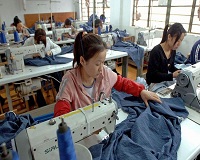
With China according priority to the textile sector in the late 1970s, there’s no looking back and the country has been sustaining pole position as the top global exporter. Even as India is trying hard to catch up, however, the efforts seem to be futile. For example, between 2001 and 2015, India’s textile and apparel exports nearly quadrupled from $10.7 billion to $41 billion. It actually doubled to $20 billion in 2005 from 2001 and then took another 10 years to touch $40 billion. During this time, China’s textile and apparel exports rose from $50 billion to nearly $200 billion. In the global market, China enjoys a 40 per cent market share and India is a distant second with a meagre 5 per cent share.
Factors that helped China
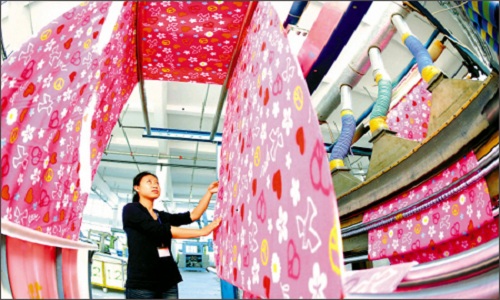
Indian textile industry has had to deal with numerous problems. These are the result of faulty governmentpolicies. On the contrary, China made its place even stronger with business-friendly policies. In 1979. China began its open-door policy and kick-started economic reforms. It started restructuring its textiles industry. With over 100 years’ experience in textiles, China had basic infrastructure for the industry in place. It just needed a sharp focus, which began by raising capacities in each segment of the sector. The textiles industry is a labour-intensive one, and China took advantage of its low-cost human resources, what with a huge population looking for a source of income. China came up with six priorities to promote the textile industry – giving it a favourable treatment from supply of raw materials, to power, modernisation, bank loans, foreign exchange, and import of advanced technology.
From around 18 million spindles in the 1980s, China’s capacity in spinning mills went up 120 million spindles by 2015, or 48 per cent of the total capacity in the world while India has 51 million spindles, making up 20 per cent of the world capacity. China primarily targeted production for the export market. It took advantage of a bilateral pact that it had signed with the United States (US) in 1980. This helped China export nearly 50 per cent of its total domestic production at one point of time in the 2000s. The initiatives also gave China the advantages that a first-mover usually gets in any industry. Next was automation and modernisation that China quickly lapped up.
India, a stark contrast
Today, while it’s not just China, the country needs to fight for its position with Bangladesh and Vietnam as well. One of the major deterrents was Indian infrastructure, which is followed by a shortage of raw material. In 1994, spinning mills bled after the cotton crop failed and traders hoarded cotton. Third bigger issue was hank yarn obligation. Since India has three million handlooms, the government has always been of the view that the sector should get a continuous yarn supply. Therefore, it is mandatory for a textile mill to ensure that 40 per cent of its production is in hank form.
FICCI data points out successive governments have come up with various schemes to help the textile industry move forward. Currently, at least 10 schemes are active, but they don’t seem to be working for the sector’s advantage. Another major worry is the unorganised structure of the industry. In fabric manufacturing and processing, these units use secondhand machinery that is imported. Shuttle-less looms help weave fine fabrics make up only two lakh of the nearly two million looms in the country, which reflects inefficiencies. Dismantled looms in China find their way into India and it is no surprise that Chinese machines make up nearly one-third of textile machinery imports into India. According to FICCI, other issues include higher capital costs, absence of fibre neutrality, poor technology, and a lack of access to credit.
Another issue plaguing the industry is the absence of free-trade agreements with major markets like Europe. While lesser developed countries such as Bangladesh can export to Europe at zero duty, others like Pakistan enjoy an advantage under a general system of preference plus system. Indian imports to Europe attract 9.6 per cent duty.
To lead from the front, the country needs to first increase productivity and efficiency. That can be achieved only if it encourages the setting up of more integrated textile units. While skilled manpower is the need of the hour for the sector, a technology upgrade should be given priority. India, too, has set up a technology mission under its ‘Make In India’ programme. Time can only tell how far it can take the textile industry in harnessing promising prospects.
Trade show organiser WSN Développement is on the hunt for a solution to attract more buyers. This means a focus on Asia. Considering the number of brands coming out of Asia, buyers from China, Japan and South Korea in particular are at the heart of a new strategy.
Hence, since January, WSN Développement has placed a permanent representative on the Asian continent. With the firm already being promoted by agents there, the French group is now strengthening its presence with the appointment of Jean-François Nicholaï as head of business development in Asia.
Attracting new clients, such as specific Chinese concept-stores, as well as strengthening relationships with those already known to the firm, will be Nicholaï's mission. WSN Développement is also preparing to launch new activities aimed towards buyers from three main countries -- China, Japan and South Korea. These future initiatives are intended to link the trade show and its brands with Asian buyers and help establish appointments in Paris during the seasonal Fashion Week.
WSN has been confronted by a drop in visitor attendance at the most recent edition of Première Classe and Paris Sur Mode. The position formerly held by Jean-François Nicholaï dedicated to VIP buyers was reassigned by WSN Développement to Patricia Chelin, who until then had been in charge of personal shopping services at the shows.
More than a 100 readymade garment factories in Bangladesh are operating in risky buildings despite an order to vacate buildings that put the lives of workers at risk. After the Rana Plaza building collapse that killed more than 1,100 people, mostly garment workers, some 2,000 garment factories have been inspected by Accord, Alliance and some 1500 factories by the government-ILO joint move.
More than 80 per cent remediation has so far been completed in Accord and Alliance-listed garment factories but the progress is slow in factories under national initiative. During initial inspection on structural integrity, fire and electrical safety conducted by western retailers' two platforms -- Accord and Alliance and the national initiative -- soon after the Rana Plaza tragedy in 2013, a total of 163 garment factories were found running in risky buildings. They were asked to relocate but only 39 factories complied.
Even after the 39 garment units relocated, the building authorities allowed other establishments to run businesses despite an order not to use the structures for any commercial purposes until required safety measures were put in place. Factory and building owners have been repeatedly asked not to use buildings without retrofitting or renovating them.



